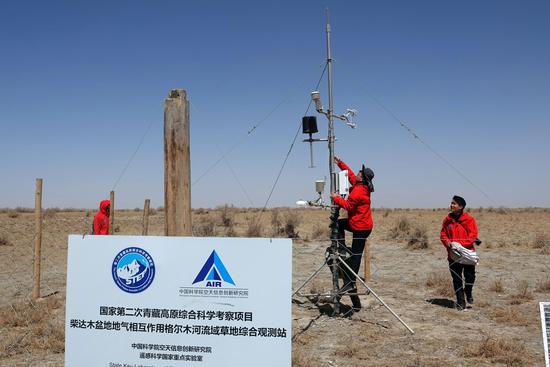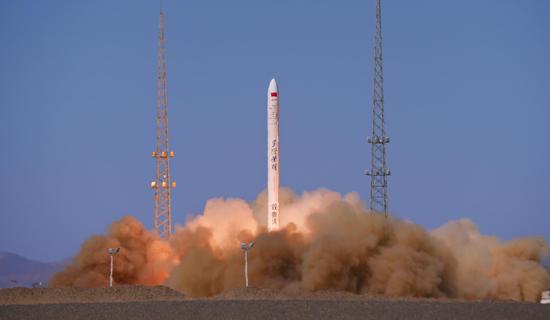Breakthroughs have been made in solar physics research with the domestically developed world's first mid-infrared solar observation telescope entering a critical phase of assembly and debugging of its core devices, expected to start trial observation in the near future.
The infrared system for the accurate measurement of solar magnetic field (AIMS) with the core scientific device, an infrared terminal imaging system, is expected to fill the blanks in the world where there is no telescope for the study of mid-infrared band solar magnetic fields, according to Wang Dongguang, chief engineer from Huairou Solar Observing Station of the National Astronomical Observatories, Chinese Academy of Sciences (CAS), the Xinhua News Agency reported on Sunday.
The telescope is located at the Lenghu Astronomical Observation Base at the Saishenteng Mountain, whose average altitude is about 4,000 meters, in Mangya city, Northwest China’s Qinghai Province. Including the AIMS, a total of nine optical astronomical telescope projects have been launched at the base thanks to the favorable observation conditions such as water vapor, visibility, number of sunny days and atmospheric transparency.
The Lenghu base has a dry climate and low levels of water vapor which benefit solar observation in mid-infrared band, according to Bao Xingming, an associate research fellow from the National Astronomical Observatories of CAS.
The scientists solved the challenge of high ambient noises and degraded detector performance they have encountered in solar observation within this range of infrared band of solar observation, said Feng Zhiwei, a senior engineer from the National Astronomical Observatories of CAS, noting that the terminal system is mainly used for solar monochromatic imaging observations in the infrared band between 8 and 10 microns when investigating into the mechanism of mass and energy transferring during violent solar eruptions.
According to Feng, the infrared imaging terminal is composed of three systems with all their components including detector chips are domestically made.
Wang stated that the AIMS telescope is not only innovative in its scientific goals by global standards, but also makes innovative breakthroughs in its use of technology. The research and development of the telescope has promoted the development of infrared spectrum and infrared polarization measurement technology in China.
According to the scientists, by providing more accurate solar magnetic field and mid-infrared imaging and spectral observation data, the telescope aims to study the mechanism of the generation, accumulation, triggering and energy release of magnetic energy in solar magnetic field activities, as well as the transferring process of matter and energy during violent eruptions such as flares, and is expected to achieve breakthroughs in the research of solar physics.
Among all the 35 telescopes at the Lenghu base, four telescopes have been put into use in scientific observations, 28 have completed construction of observation towers and dome installation, with the remainder currently under development, scheduled to complete the installation and debugging of the main devices of the telescopes or the prototype model equipment within this year.


















































 京公网安备 11010202009201号
京公网安备 11010202009201号